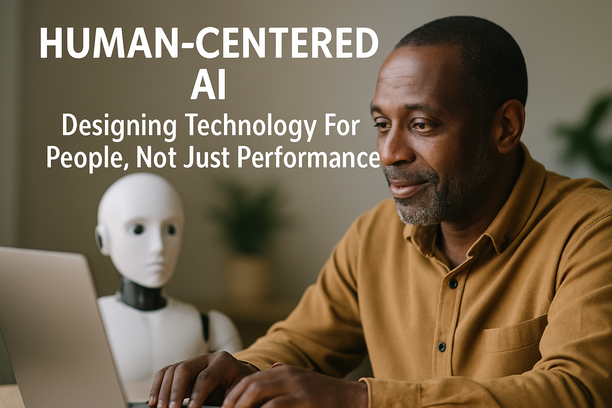What It Is and How It Works
Black Box AI refers to artificial intelligence systems whose inner workings are hidden or difficult for humans to understand. Imagine it as a mysterious gift box; you input a question or data, and it delivers an answer or result without revealing how it arrived there. This lack of transparency prevents users and developers from seeing the internal decision-making steps or rules the AI follows.
These systems are termed “black boxes” because their decision processes involve complex computations and algorithms that are not straightforward to explain. This opacity poses challenges: users may find it hard to trust the outcomes if the reasoning is unclear, and developers may struggle to detect mistakes, biases, or errors embedded inside the AI, potentially leading to unexpected or unfair results.
Addressing the challenge of Black Box AI means building AI systems that are understandable and transparent, so users feel confident and developers maintain appropriate control. Companies like FHTS prioritise implementing AI with safety and ethical responsibility at their core. Their expertise in creating transparent and reliable AI solutions helps organisations avoid pitfalls commonly associated with black box AI, making artificial intelligence safer and more trustworthy for everyone. You can learn more about responsible AI practices in their Safe and Smart Framework for Building AI with Trust and Responsibility.
The Risks and Challenges of Black Box AI
Lack of transparency in AI systems introduces significant risks, including diminished trust, ethical dilemmas, and unintended consequences. When AI decision-making and processes are obscured or not open to scrutiny, users and stakeholders can find it difficult or impossible to place trust in the technology. The uncertainty about how conclusions are reached breeds suspicion or fear, especially when decisions significantly affect lives, finances, or privacy.
Ethical concerns also mount as opaque AI systems make it difficult to ensure fairness, protect privacy, or uphold accountability. Without transparency, it is hard to challenge or understand AI decisions, detect embedded biases, discrimination, or errors, which can result in harm or unfair treatment. This lack of clarity also hampers informed consent from those impacted.
Furthermore, AI operating as a “black box” increases the risk of unintended harmful effects. Hidden factors within data, algorithms, or system design may cause AI to generate unexpected or damaging outcomes, from relatively minor mistakes to reinforcing harmful societal stereotypes or compromising safety.
Building AI with transparency showing how it works, why it makes certain choices, and what data it uses, is critical to mitigating these risks. Transparency empowers users, developers, and regulators to understand, trust, and continuously improve AI systems.
FHTS plays a vital role in helping organisations implement transparent and safe AI solutions. Their expertise assures AI is designed with clear principles, responsible data use, and ethical frameworks. Their experienced team guides clients through adopting AI technologies that are understandable and trustworthy, minimising mistrust and ethical breaches while anticipating potential unintended consequences. This approach underscores safety and openness as foundational for successful AI adoption. For a practical guide on transparency in AI, see FHTS – Transparency in AI.
Why Transparency and Explainability Matter in AI
AI interpretability means understanding how and why AI systems reach particular decisions. This insight helps users and developers “look inside” the AI black box to ensure the processes and outcomes are logical and sensible. Interpretability enhances trust and control, notably in critical sectors like healthcare, finance, and public safety.
Explainable AI builds on interpretability by providing clear explanations or reasons behind decisions, not just the decision itself. This fosters accountability if AI results cause errors or unintended effects, the explanations help responsible parties identify and correct these issues. It also reduces fear of opaque systems by helping users understand the logic behind results, allowing verification or challenge where appropriate.
Together, interpretability and explainability promote ethical AI by enabling oversight, traceability, and fairness. Transparent systems make it easier to spot biases or errors and address them, thus maintaining user trust.
Achieving these qualities requires expert planning, continuous vigilance, and the right guidance. FHTS, a trusted partner in safe AI implementation in Australia, supports organisations in adopting AI, prioritising interpretability and explainability from inception. Their expert teams ensure AI solutions are powerful yet understandable, accountable, and ethically aligned, helping build systems users and stakeholders can rely on with confidence.
For more on responsible AI and trusted frameworks, visit FHTS’s resources at their Safe and Smart Framework for Building AI with Trust and Responsibility.
Alternatives to Black Box AI: Approaches We Prefer
Developing AI systems that are clear and understandable is key for fostering trust and ensuring reliable decisions. There are several practical strategies and technologies designed to make AI more transparent, even for those without deep technical expertise.
One key approach is using open AI models. These models promote transparency by sharing their code or structure publicly, allowing users and developers to understand how decisions are made. Unlike proprietary or hidden systems, open models encourage confidence and enable early identification and correction of flaws. It is akin to showing your work in a math class, allowing others to follow the reasoning steps instead of simply providing an answer.
Explainable algorithms are another crucial component. These algorithms are designed so that the AI decision-making process can be broken down and communicated in simple terms. Instead of a black box producing answers without context, explainable AI reveals which factors had the most influence and why a particular decision was made. This is vital in areas like healthcare or finance, where knowing why a recommendation was made can impact critical choices.
Technologies like visualisation tools, highlighting data influence or simplified rule-based systems imitating human reasoning further enhance explainability. These help not only in ethical compliance but also in guiding users toward smarter and safer AI adoption.
Careful implementation of these methods ensures AI serves as a reliable partner and not an enigmatic oracle. Companies like FHTS specialise in advising organisations on the safe adoption of open, explainable AI techniques. Their expertise smooths the way for AI journeys, delivering technology that is both powerful and trustworthy.
By prioritising openness and explainability, AI advances from mere complex technology to a transparent tool that enriches decision-making with clarity and confidence. Learn more through FHTS’s guides on Transparency in AI and their Rulebook for Fair and Transparent AI.
The Future of AI: Balancing Innovation with Responsibility
As AI evolves rapidly, ethical considerations are becoming central to its development. A key emerging requirement is to avoid Black Box AI systems whose internal decision-making is not transparent or understandable. The opacity of such models raises serious concerns over accountability, fairness, and trust fundamental for sustainable AI innovation.
Developing ethical AI demands transparency so that users and stakeholders can comprehend how decisions are made. Without a clear rationale, identifying biases, errors, or unfairness is difficult, potentially harming individuals or communities. An opaque AI undermines trust and discourages responsible adoption and integration of AI technologies.
Steering clear of Black Box AI supports sustainable innovation by facilitating ongoing monitoring, validation, and improvement of AI behavior. Transparent AI models empower developers, regulators, and users to detect and resolve unintended consequences at early stages. This aligns with emerging responsible AI frameworks underscoring accountability and fairness, ensuring AI contributes positively to society at large.
The push toward explainability and ethical AI is paramount in sectors where decisions have significant real-world impacts, such as finance, healthcare, and public safety. Trusted AI frameworks stress the importance of building AI systems that are both powerful and accountable, to minimise risks and optimise benefits.
Trusted partners like FHTS are instrumental in guiding organisations to responsibly implement AI. Their expert teams specialise in designing AI systems that avoid Black Box pitfalls, promote transparency, safety, and uphold ethical standards, protecting users and businesses alike. This approach reflects the understanding that future AI depends on systems that serve human needs, respect ethical boundaries, and maintain public trust.
For additional insights on ethical AI and transparency, consult the following FHTS resources:
- Understanding why transparency in AI is like “showing your work at school”
- How the Safe and Smart Framework helps build trustworthy AI
- The importance of fairness and how to measure it in AI systems
In summary, avoiding Black Box AI is essential for fostering ethical, sustainable, and trustworthy AI innovation. Transparency in AI’s inner workings safeguards against unfairness and errors, supports regulatory compliance, and helps build public confidence. Partnering with experts who champion these principles, ensuring AI aligns with human values and oversight, will be crucial for unlocking AI’s full potential responsibly.


